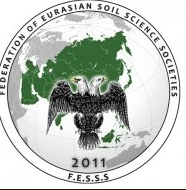Resource information
This research was planned to investigate the structural properties and soil mapping capability according to rules of the 7. Approximation Soil Taxonomic System of the region western part of the Büyük Menderes Basin by using Landsat satellite images in remote sensing technique. The data gathered from field observation about some soil properties and land requirements of different land use types were correlated and as a result of that the boundaries of land use patterns were carried out. Land use patterns were detected according to suitable land use classes for soil mapping units and potential land use map were done. Land use assessment is likely to be the prediction of land potential for productive land use types. This case is great important in guiding decisions on land uses in terms of potential and conserving natural resources for future generations. The main objective of this study was to determine land resources and to assess potential land use in the west part of the Büyük Menderes Basin of Aegean region. The study area covers about 24.300 km2 and formed on alluvial material deposited by Büyük Menders River. Using Landsat 5 TM satellite images, which cover back and foot slope of mountain and alluvial plains of the western part of Menderes Basin, and taking physiographic units of the region as basis, detailed soil series and phases were determined. Soils of the region were classified as Entisol, Inceptisol as 2 orders, 4 suborders, 4 great groups and 6 sub groups, and 10 series. Twenty-five different land utilization types grouped into 4 major land use groups were evaluated for the studied area’s soils. ILSEN computer model was used to determined potential land use groups and suitable classes for agricultural uses. In addition, ArcGIS software was used to generate their maps and database. Suitability map for agricultural uses results showed that, distributions of the best, relatively good, problematic and restricted agricultural lands were 31,68%, 22,63%, 22,16% and 23,53% respectively. Only 31,68% of the study area has the best land for agricultural uses. The main plant growth limitation soil factors are shallow soil depth, high slope, subsurface stoniness, poor drainage, heavy and coarse sub surface soil texture and low water retention capacity.



